A quick keyword activity for middle schoolers
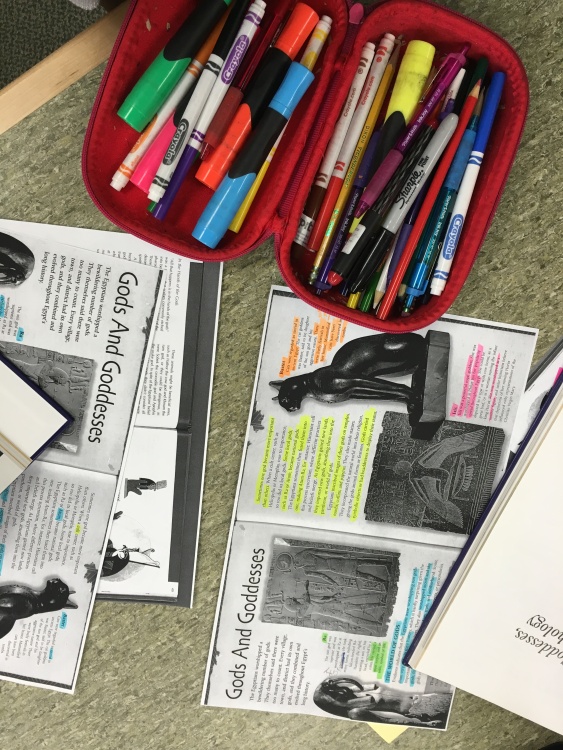
I’ll start by saying I did a few of the activities in this lesson on the fly. I can’t be the only one who does that, right? Plan a lesson and then make a quick mid-course correction?
When you primarily work with high schoolers, 6th grade can often require some quick thinking. Sixth graders are highly focused on a single idea for one minute and bouncing around from thought to thought the next. They can be great at following directions and also so absorbed at the task at hand that you have to physically move yourself into their line of vision to get their attention.
When our little class of 6th graders came into the library today for history class, they started out by asking me if britannica.com is a database. It was a great way to start the lesson and I love that they had that question. From there, we were off and running on a preliminary research lesson that served as the underpinning for their unit on Egyptian deities.
Step 1: Reading
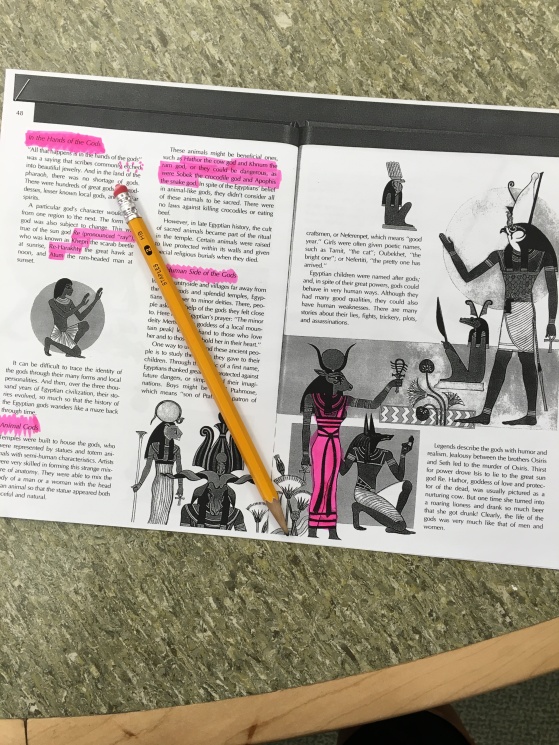
The girls are each researching an Egyptian god. They’re at the very beginning of their project and they have a benchmark on Thursday from their teacher, to have a certain number of notecards with sources and notes. So we started with two general readings on Egyptian gods, both photocopied from books.
I instructed the girls to read through their selections, using two different colors of highlighter. One to highlight keywords, and one to highlight words they didn’t understand. We had a brief discussion about keywords and what that means. They could also use a pen to write in the margins of the pages. They read silently for about 10 minutes.
Step 2: Identifying keywords
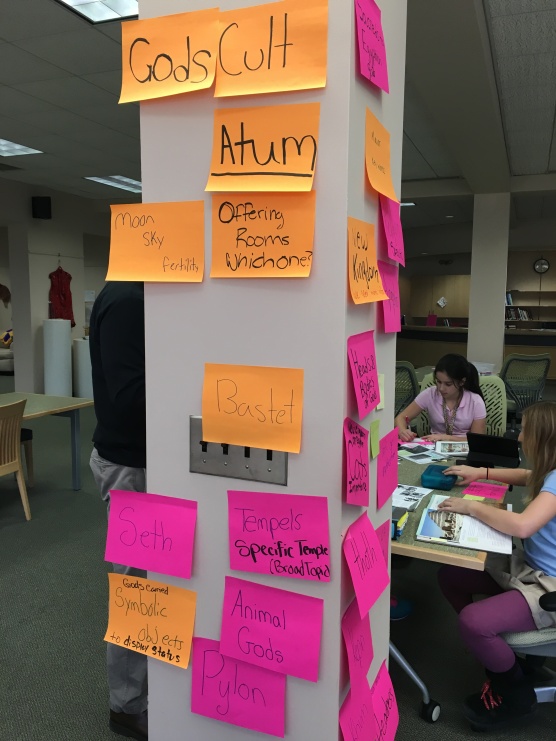
Next, we had the girls go back through their readings and write down any keywords they thought were important on sticky notes–one sticky per keyword. I labeled one side of a column “Major Keywords.” The girls then put ALL their sticky notes up on the column–there were maybe 50 in all. We took a moment to survey them and then I asked for the students to identify any notes that were duplicated, grab them all, and rewrite the keyword on a giant sticky note. This took about five minutes. They were quickly able to identify which words were most important because they were physically represented on a larger sticky note. We looked at the remaining words and tried to determine what to do with them. Were they words that were less useful to us? Did they need to be clarified or expanded upon?
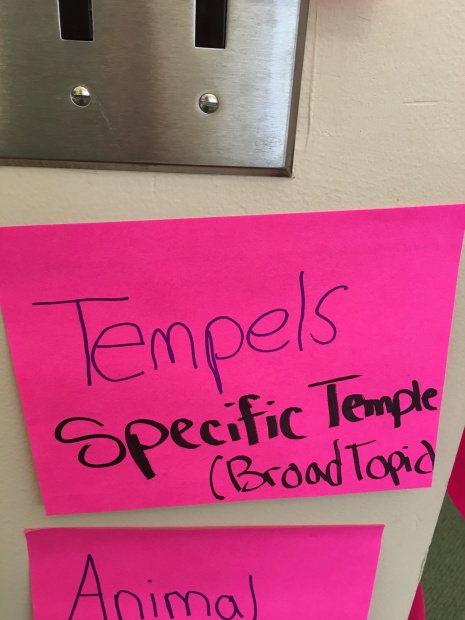
We also looked at the big stickies to see which terms were going to be harder to search. “Religion,” for example. Or “temple.” The students quickly understood that these terms were too general, and I asked volunteers to jot down what they needed to do to “fix” the term. Some girls investigated keywords that they thought might be related–two different names for one god, for example. Others added descriptors to narrow down the keyword. Others simply wrote down that a keyword was too broad or that “we need more info.”
Step 3: Research
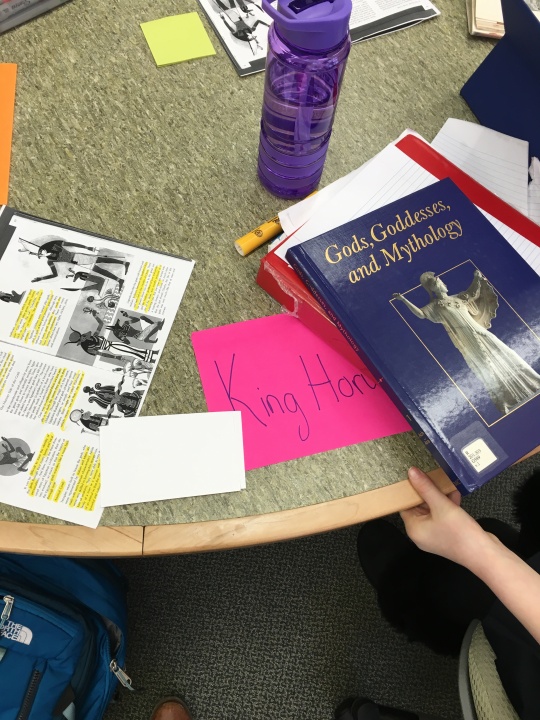
Once we were satisfied with our collection of words, I asked the students to each grab a sticky note and take it back to their seat. I had a cart of books for them to do their research in, and we had a brief discussion about what to do with these keywords. They got it right away–look in the index. For the rest of the block, the girls explored the books, taking notes on their notecards.
Step 4 (but we ran out of time): Group share
If we had had time, I would have had the students share one or two things that they learned in their research. I also would have had them reflect on the keyword activity. We got a bit sidetracked by our database/Britannica discussion at the beginning, and the keyword sort took longer than I anticipated–but it was the best part of the lesson, in my opinion.
Takeaways
With students this age, helping them understand the context of their research is critical. They were able to make connections between terms and identify strong keywords vs. weak keywords. It would be interesting to have them physically draw lines between the words, or categorize them. But in a single block, what we were able to accomplish was helping them toward the understanding that bid ideas can be represented by single words or phrases, and that using them is the most efficient way to search for information.
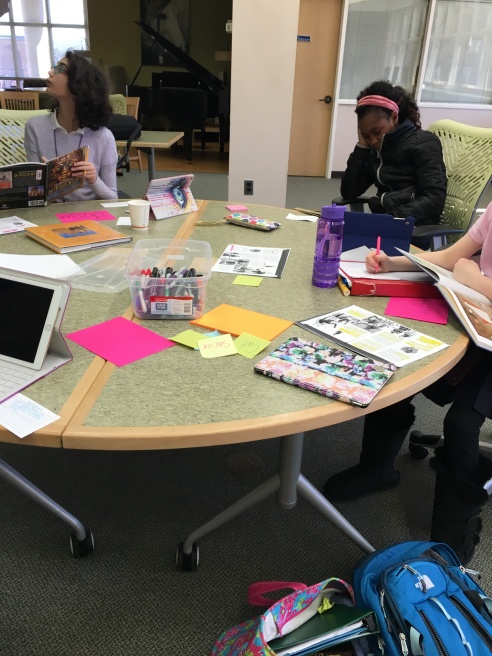

Sarah, this is activity is just fantastic! Thank you for sharing!